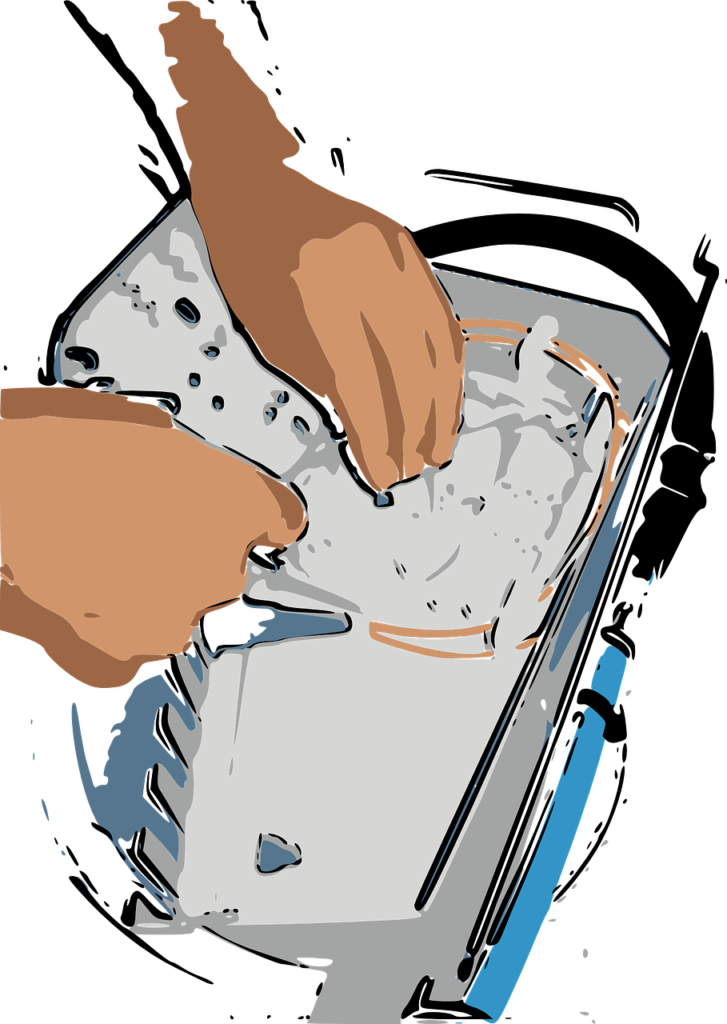An OTDR, or Optical Time Domain Reflectometer, integrates a laser source into a detector to offer an inside view of the fiber link. The laser signals the fiber in the area the sensor receives the light reflected from the various components of the link. The signal is graphed, creating a post-analysis event table delineating information on each network component. This article discusses what an OTDR is, how it works, and how to interpret the data.

ALT Text: fiber optics
Related: Coaxial Cable Splitter [FAQ]
How An OTDR Works
The signal from the laser consists of a short pulse holding a specific amount of energy. A clock calculates the exact time of flight of the pulse, converts it into the distance, and translates the fiber’s properties. As the pulse travels along the fiber, a small percentage of the pulse’s energy goes back to the detector from the reflection of the connections and the fiber. When the entire pulse returns to the detector, it puts out another pulse and continues until the acquisition time is over, painting a clear picture of the link’s components.
After completing the acquisition, the distance, loss, and reflection of each event are miscalculated through signal processing. The total link length, loss, ORL, and fiber attenuation are also calculated. The most significant benefit of using an OTDR is the single-ended test, which requires only one instrument and operator to find fault in a network or qualify the link.
Different Kinds Of Reflection
As discussed previously, the OTDR offers a view of the link by translating the light level that returns from the pulse sent. There are two kinds of light levels: A high-reflection peak at the connection points known as “Fresnel reflection” and a constant low level known as “Rayleigh backscattering.” Rayleigh backscattering is used to determine the level of attenuation in the fiber as a function of distance (dB/km), which in an OTDR trace is illustrated by a straight slope. The natural reflection and absorption of impurities in optical fiber create this phenomenon. When hit, certain particles redirect the light in different ways, generating both signal backscattering and signal attenuation. Higher wavelengths are less attenuated than shorter ones and thus use less power to travel over the same distance than a standard fiber.
The second kind of reflection a TDR uses, “Fresnel reflection,” senses physical events on the link. When the light encounters a sudden shift in refraction index, a higher amount of light gets reflected, generating Fresnel reflection, which can be thousands of times more potent than Rayleigh backscattering. Fresnel reflection is identified through spikes in an OTDR trace. Some examples include bulkheads, connectors, mechanical splices, opened connectors, or fiber breaks.
Related: Stranded vs Solid Wire: When & Why It Matters

Dead Zones
“Dead zones” are a vital OTDR specification that originates from Fresnel reflections. The two types of dead zones are event and attenuation. Both are expressed in the distance (meters) and vary depending on the power of the reflections. A dead zone can be thought of as the amount of time a high amount of reflected light temporarily blinds the detector until it recovers and can read light again. Consider when you drive a car at night and cross another vehicle going the opposite direction; you’re temporarily blinded. Time is converted into distance in the OTDR world- more reflection means the detector needs more time to recover and the dead zone is longer.
Most manufacturers define dead zones at the shortest available pulse width.
For single-mode fibers: -45 dB reflection
For multimode fibers: -35 dB
It is essential to carefully go over the specification sheet footnotes since manufacturers can use disparate testing conditions to measure the dead zones- especially pay attention to the pulse width and reflection value. For example, a -55 dB reflection for single-mode fiber offers more optimistic specifications of a shorter dead zone than -45 dB, just due to the fact that-55dB is a lower reflection, and the detector recovers more quickly.
The event dead zone is the smallest distance after a Fresnel reflection an OTDR can detect another event. Essentially, it is the minimum length of fiber necessary between two reflective events. As in the car example described above, when your eyes are blinded by other cars, you should be able to notice an object on the road after a few seconds without being able to identify it correctly. An OTDR detects a consecutive event but cannot measure loss. Consecutive events are merged, and the OTDR returns a global reflection and loss for all merged events. Having the shortest possible event dead zone lets an OTDR detect closely spaced events in the link. After a Fresnel reflection, the minimum distance where an OTDR can measure the loss of a consecutive event accurately is known as the attenuation dead zone.
Looking to take your business to the next level? Schedule an appointment with C&C Technology Group today!
The Dynamic Range
The dynamic range is another critical OTDR parameter. This parameter lets you know the maximum optical loss an OTDR can analyze, from the OTDR port’s backscattering level down to a specific noise level. It is the longest length of fiber that the most extended pulse can get to. The larger the dynamic range (in dB), the longer the distance reached. The maximum distance varies from one application to another, as the loss of the link under test is different. Splices, connectors, and splitters are a few of the factors that lower the maximum length of an OTDR. Thus, the key to increasing the maximum measurable distance is averaging for a more extended period and using the proper distance range.
Pulse Width
The pulse width is the length of time the laser is on. Time is converted into the distance to give the pulse width a length. The pulse in an OTDR carries the energy necessary to create the back reflection for link characterization. The shorter the pulse is, the less energy it has, and the shorter the distance it travels due to loss on the link. A long pulse holds more energy to use in extremely long fibers. The pulse can lose its energy before traveling to the end of the fiber if it’s too short, causing the backscattering level to lower to the point where the information is lost. This makes it impossible to measure the full link, since the returned end of fiber distance is shorter than the actual fiber.

Related: Cat 5 vs. Cat 6: What You Need to Know
C&C Technology Group is a top technology advisory agency in the northeast. Work with C&C for your technology consultation needs!
Looking to take your business to the next level? Schedule an appointment with C&C Technology Group today!
Last Updated on August 2, 2022 by Josh Mahan




